
Environment
20:06, 28-Apr-2019
How China ensures low carbon but high economic growth
Updated
10:03, 05-May-2019
CGTN
01:38
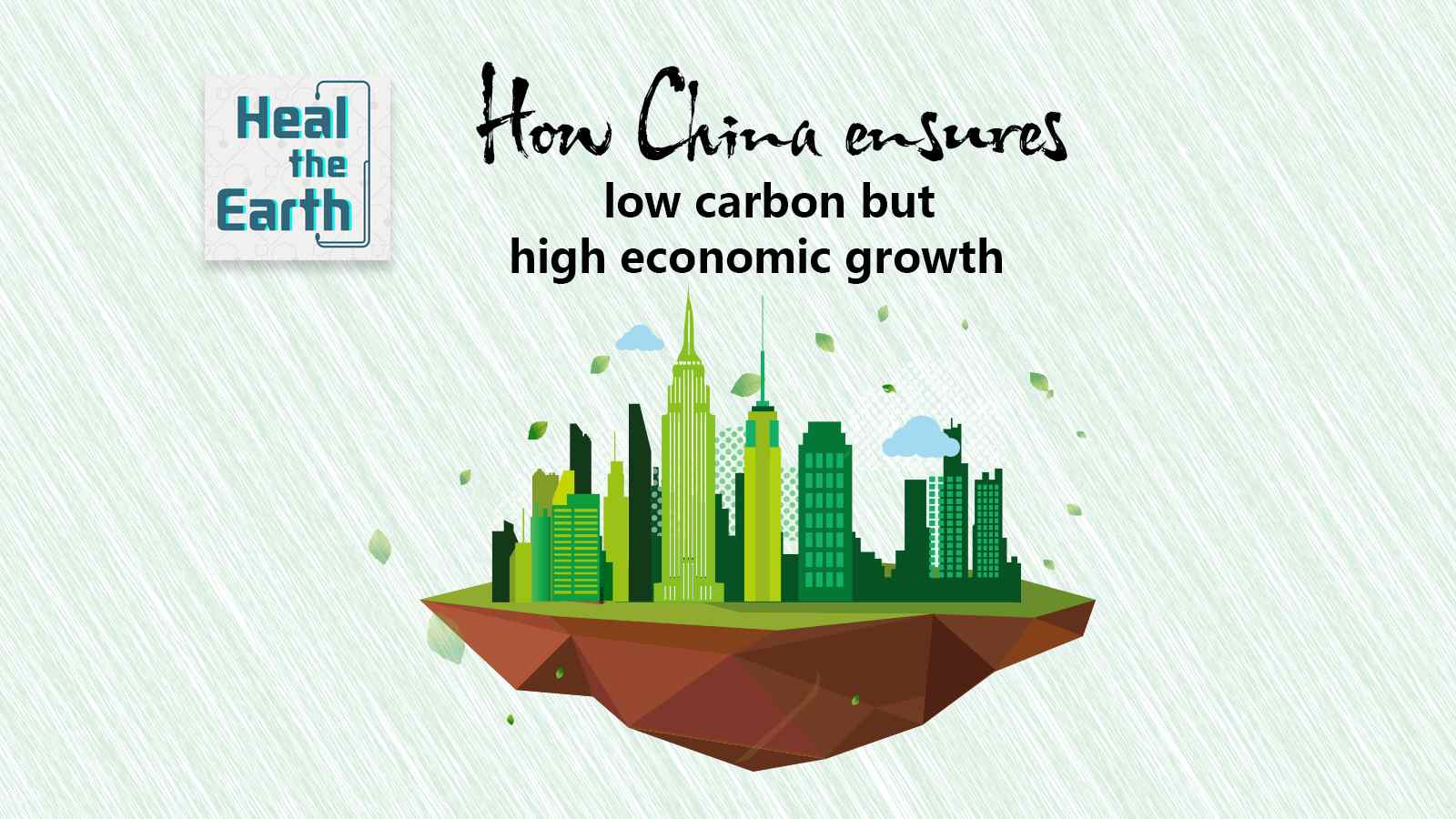
Britain’s massive industrialization led to the Great London Smog in 1952, blinding the sophisticated telescopes of Royal Observatory Greenwich and forcing its closure.
The toxic pollution from the era of industrialization not only left stargazers angry, but it also choked large parts of Europe. The U.S. also tried hard to control the emissions for nearly three decades.

Heavy smog in Piccadilly Circus, London, December 6, 1952. /VCG Photo
Heavy smog in Piccadilly Circus, London, December 6, 1952. /VCG Photo
While the scientific community initiated the next round of technological revolution to reduce industry-linked pollution, China emerged as a major global manufacturing hub in the 1990s.
Massive emissions from energy guzzling steel, cement and the power sector started polluting the water, air and soil. But the rapid speed of industrialization also led to a series of actions to control the environmental damage caused by heavy industries and big cities.
"It took China four years to do what took 30 years in the U.S. to control the pollution," said Daniel Jacob, the Vasco McCoy Family Professor of Atmospheric Chemistry and Environmental Engineering, and one of the lead authors of a research paper on China's air pollution.
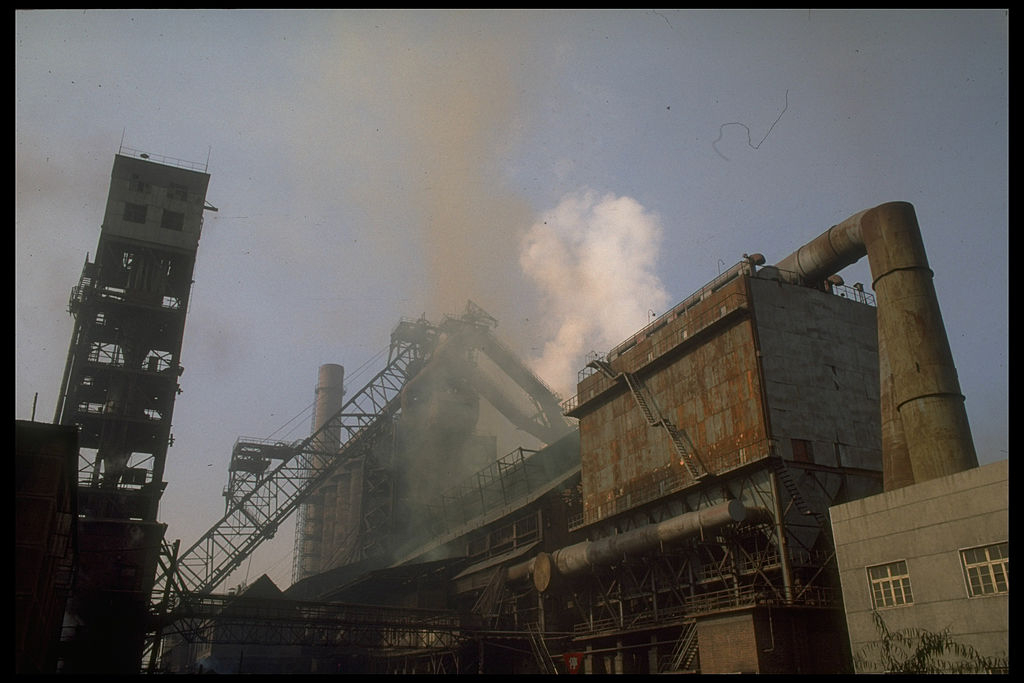
Polluting smoke is emitted, fouling city air, at Benxi Steel mill, October 1, 1990. /VCG Photo
Polluting smoke is emitted, fouling city air, at Benxi Steel mill, October 1, 1990. /VCG Photo
In 2013, China took stringent measures, shutting down coal-fired power plants, restricting vehicular traffic, and using natural gas for heating to control emissions. Within five years, the pollution level dropped by more than 40 percent in more than 74 cities nationwide.
The first detailed analysis of air pollution trends in China, released by the University of Leeds last year, revealed a 20-percent drop in concentrations of particulate pollution from 2015 to 2017.
The team found that concentrations of PM2.5 dropped by 7.2 percent per year over this period and levels of sulphur dioxide fell by 10.3 percent per year.
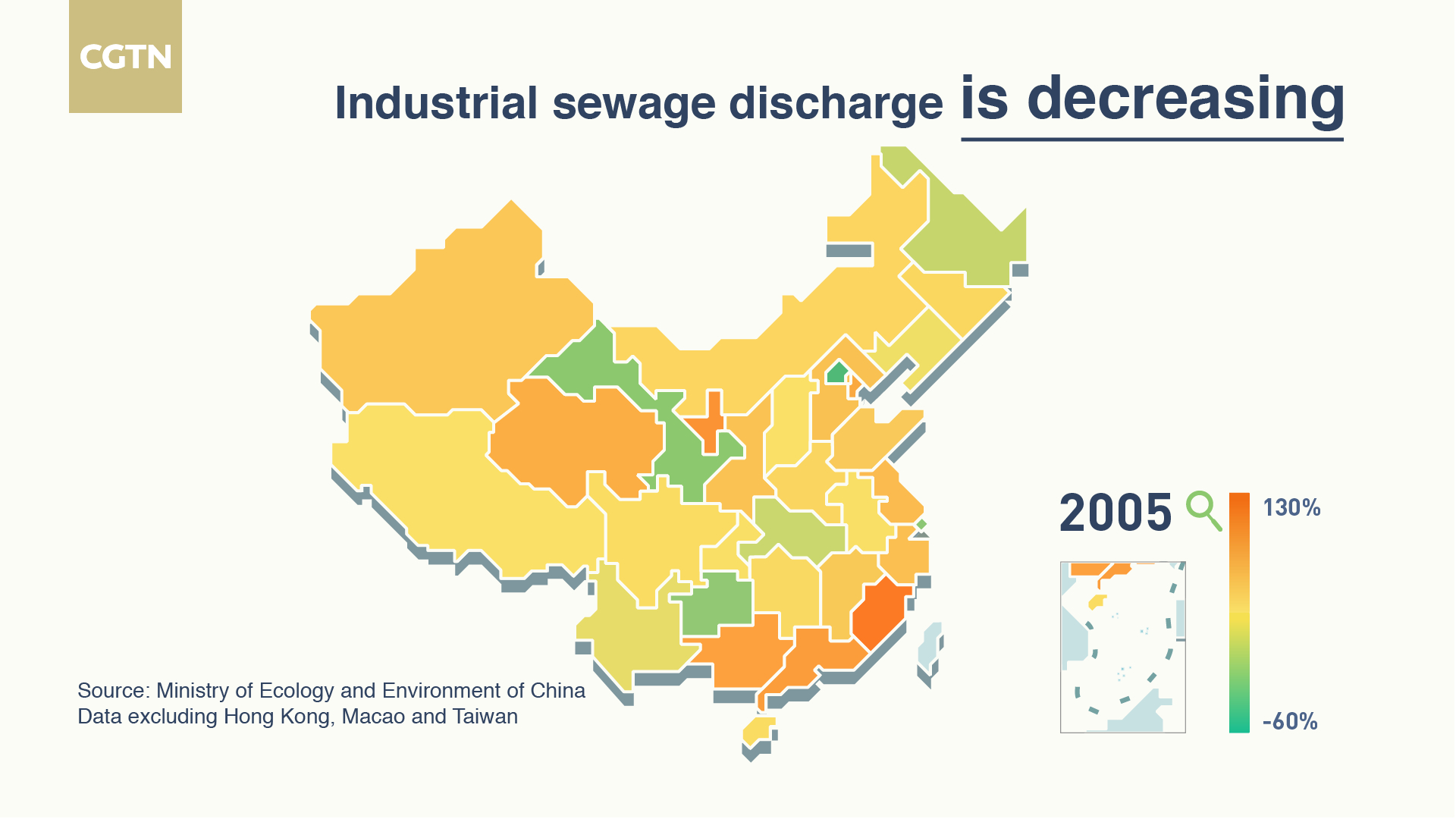
Three graphs show the decrease of industrial sewage discharge in China between 2005 and 2015. /CGTN Photo
Three graphs show the decrease of industrial sewage discharge in China between 2005 and 2015. /CGTN Photo
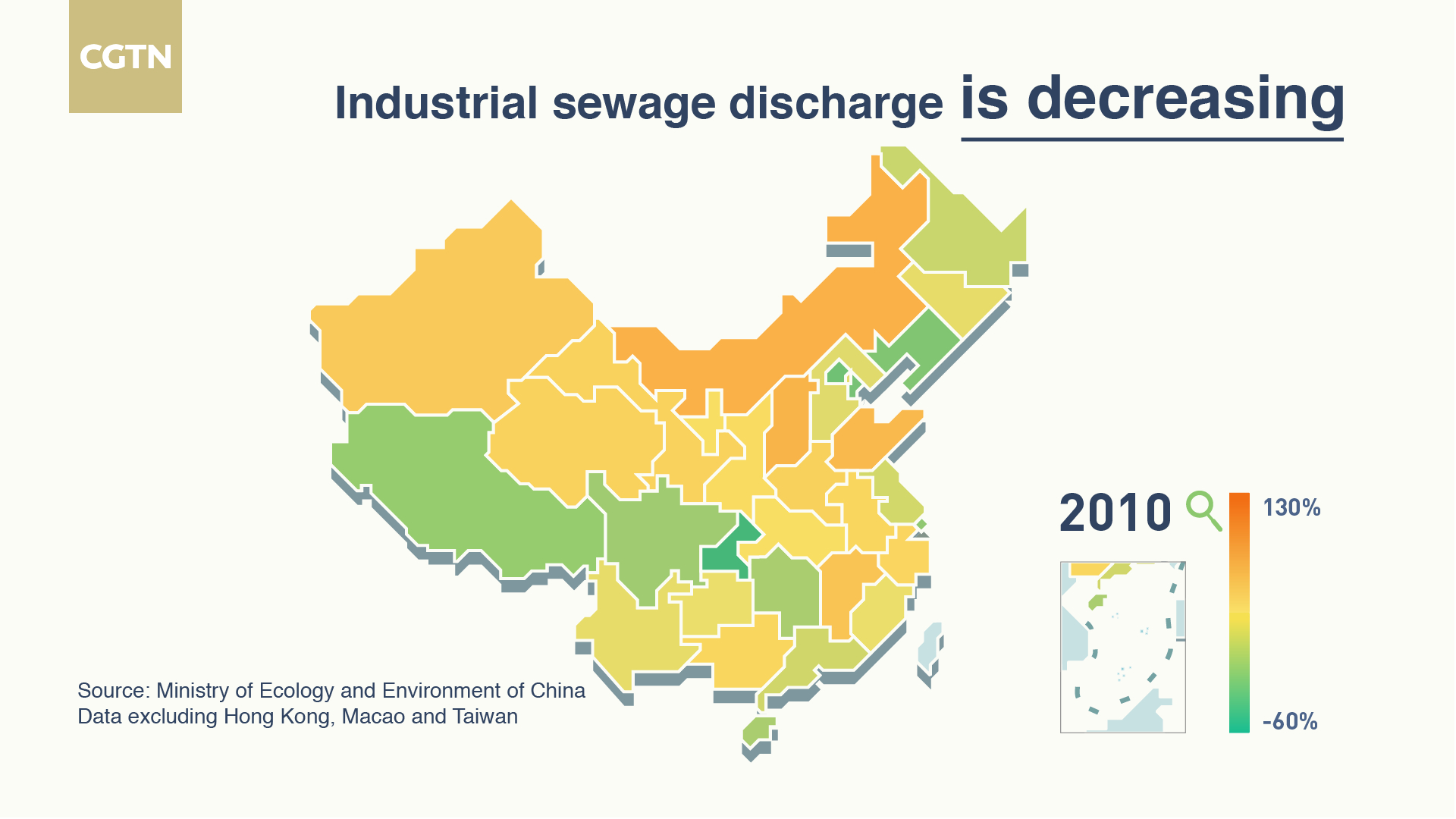
Three graphs show the decrease of industrial sewage discharge in China between 2005 and 2015. /CGTN Photo
Three graphs show the decrease of industrial sewage discharge in China between 2005 and 2015. /CGTN Photo
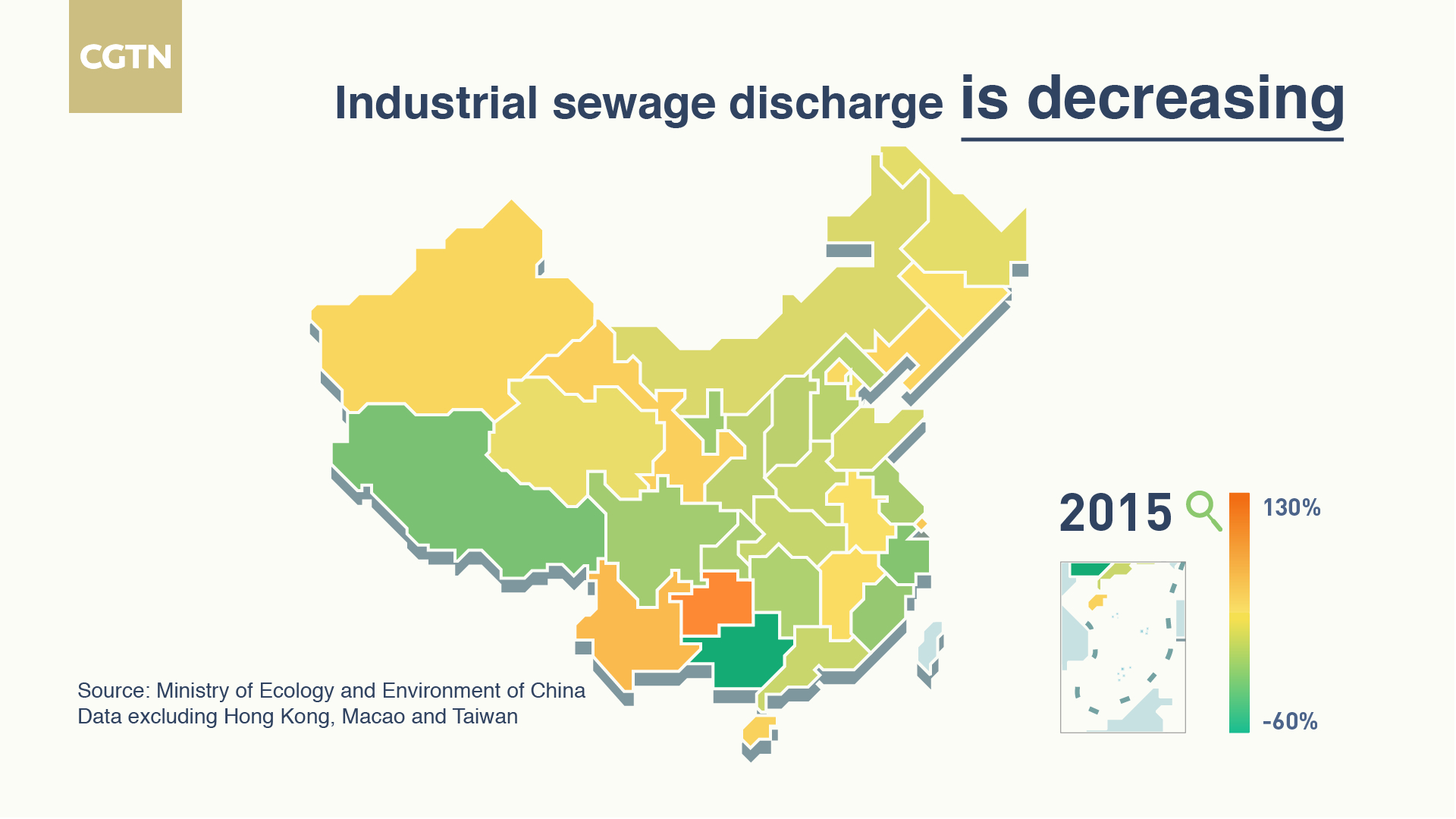
Three graphs show the decrease of industrial sewage discharge in China between 2005 and 2015. /CGTN Photo
Three graphs show the decrease of industrial sewage discharge in China between 2005 and 2015. /CGTN Photo
According to the World Health Organization (WHO), nearly 4.2 million premature deaths globally are linked to ambient air pollution, with PM2.5 causing the most damage.
In a separate study, more than 90 percent of the 115 cities studied showed gross domestic growth ranging from 40 to 100 percent between 2010 and 2015.
Around 90 of these cities performed well on the Low-carbon and Green Index for Cities (LOGIC), which tracks progress and recommends solutions for lowering emissions in urban areas.
The 90 cities that registered high economic growth also increased their LOGIC scores – some with slight increases, and others jumped as high as 25 percent. Overall, Chinese cities' scores grew 6.6 percent on the index, the report maintained.
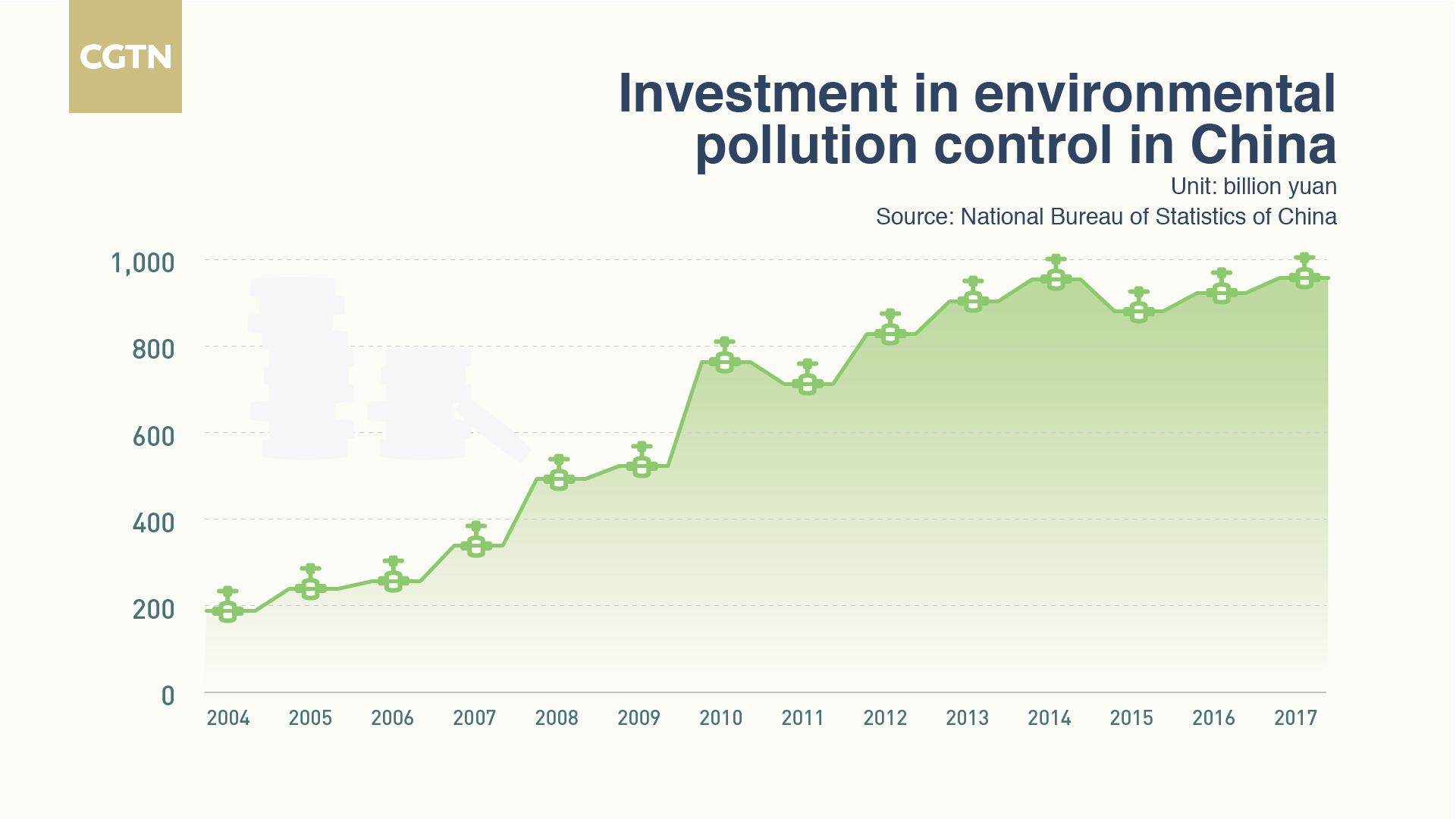
A graph showing the development of the investment in environmental pollution control in China from 2004 to 2017 /CGTN Photo
A graph showing the development of the investment in environmental pollution control in China from 2004 to 2017 /CGTN Photo
This turnaround comes as "industries and buildings have started using clean energy, transport and adopting smart technologies, but more such efforts are needed," Hu Min, executive director of Innovative Green Development Program (iGDP) told CGTN.
To further curtail the emissions, China in 2017 launched its much-awaited national carbon emission trading scheme (ETS). In its first phase, the focus will be on the power sector.
It will cover nearly 1,700 power plants in the country that emit more than three billion tons of carbon dioxide.

SITEMAP
Copyright © 2018 CGTN. Beijing ICP prepared NO.16065310-3
Copyright © 2018 CGTN. Beijing ICP prepared NO.16065310-3